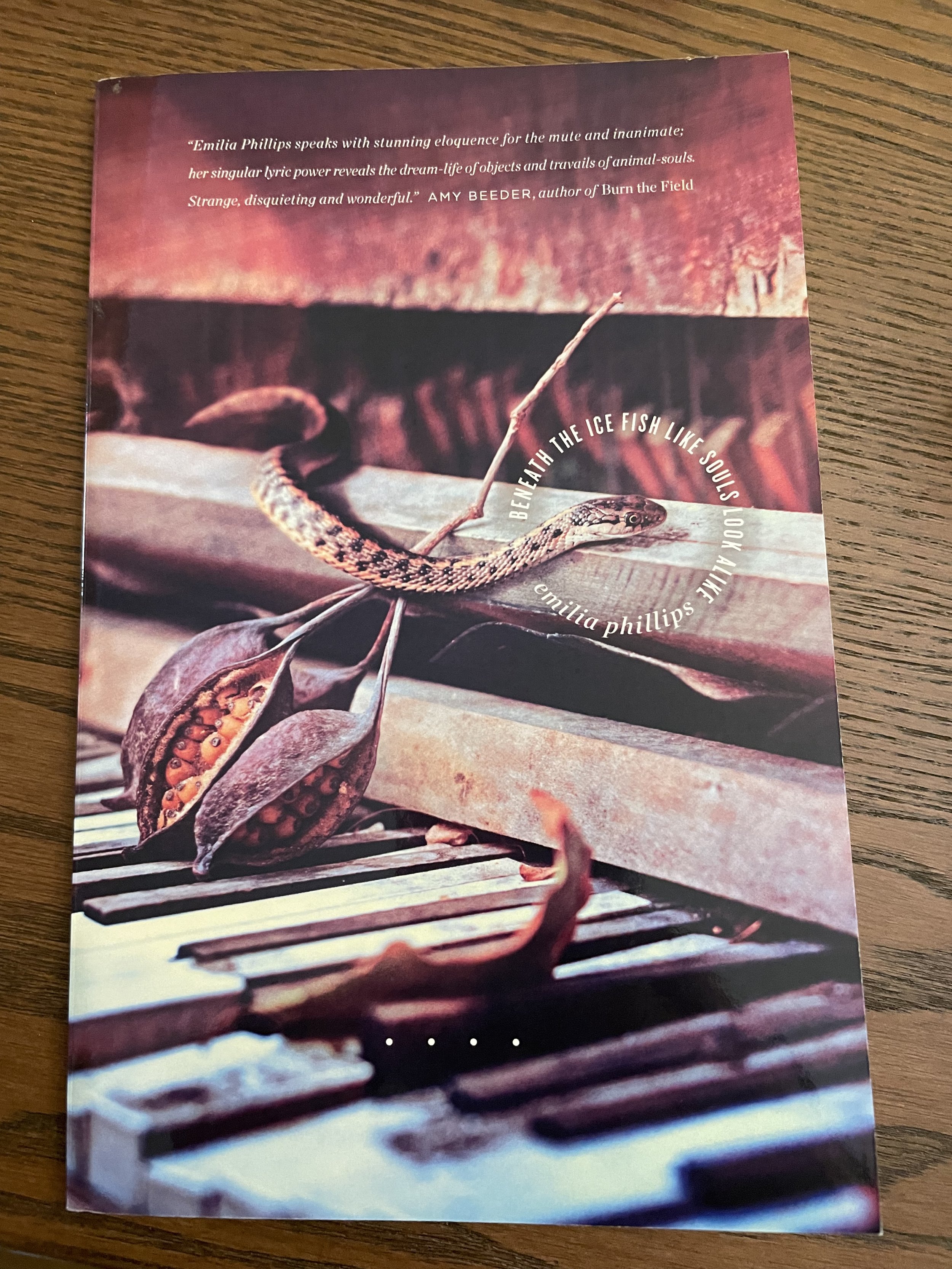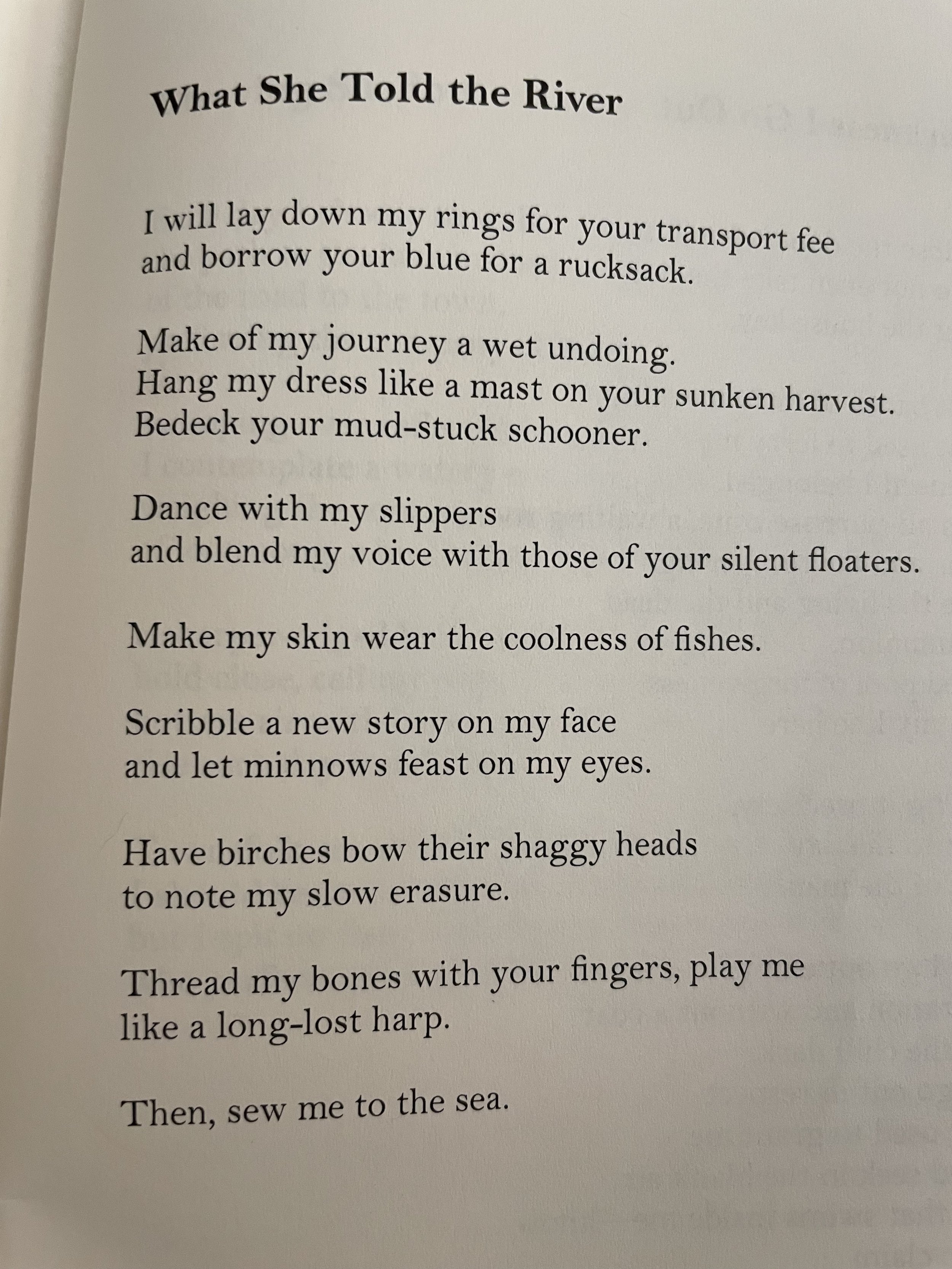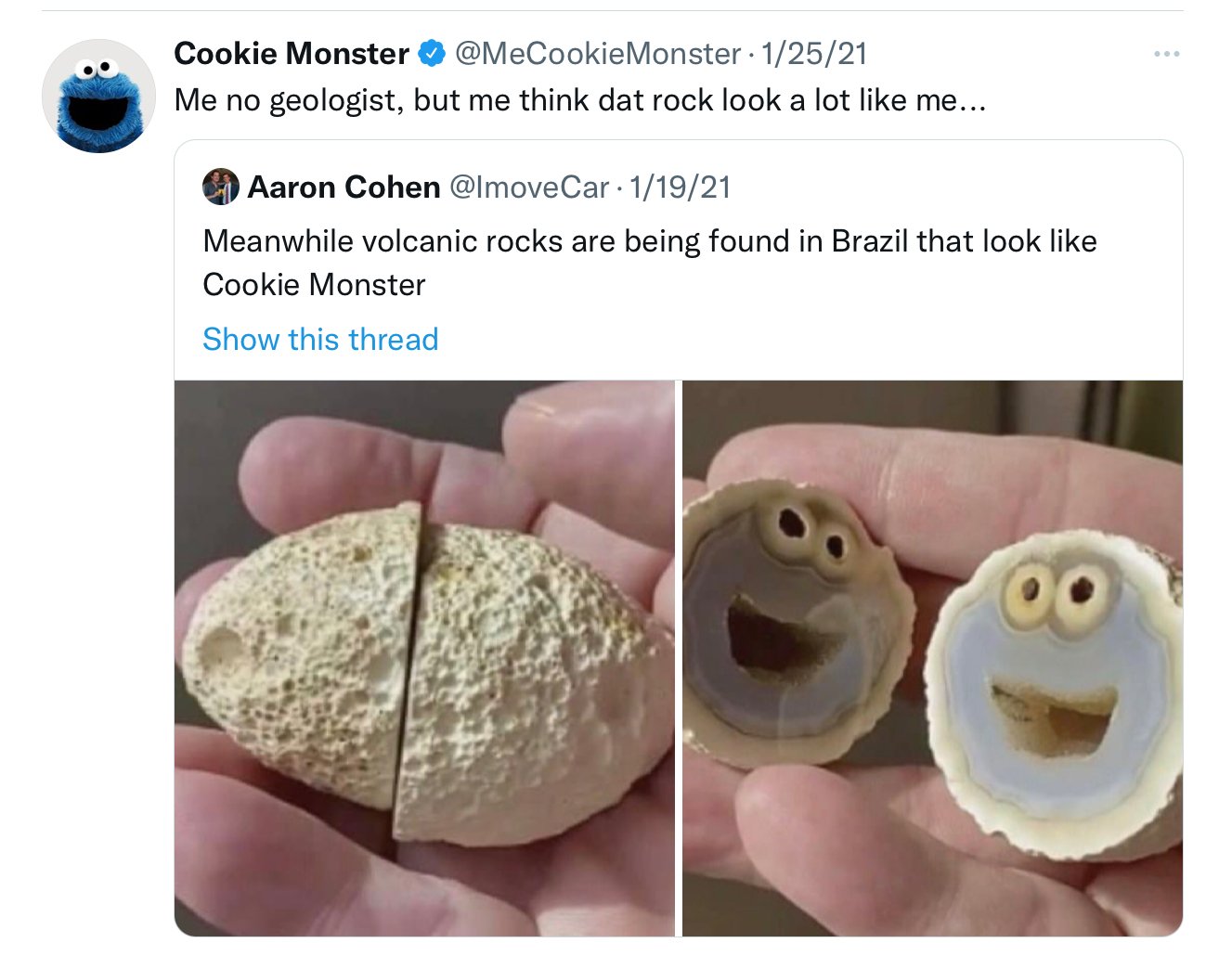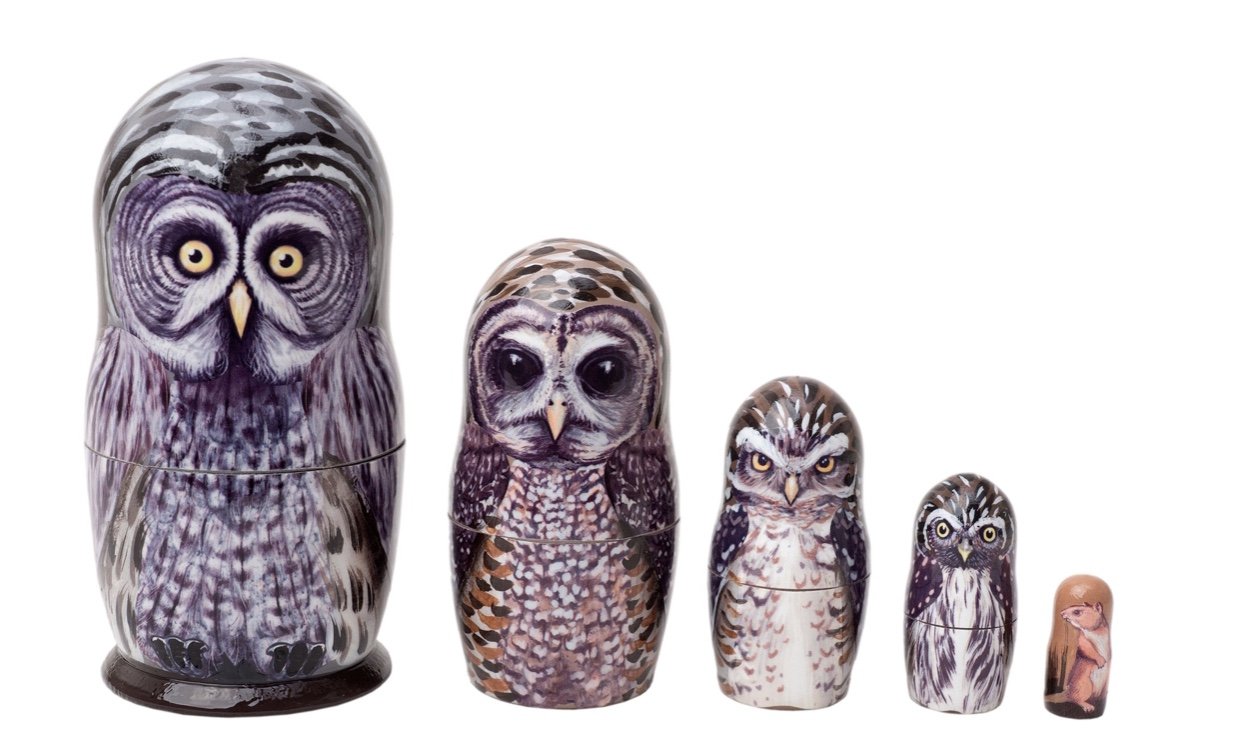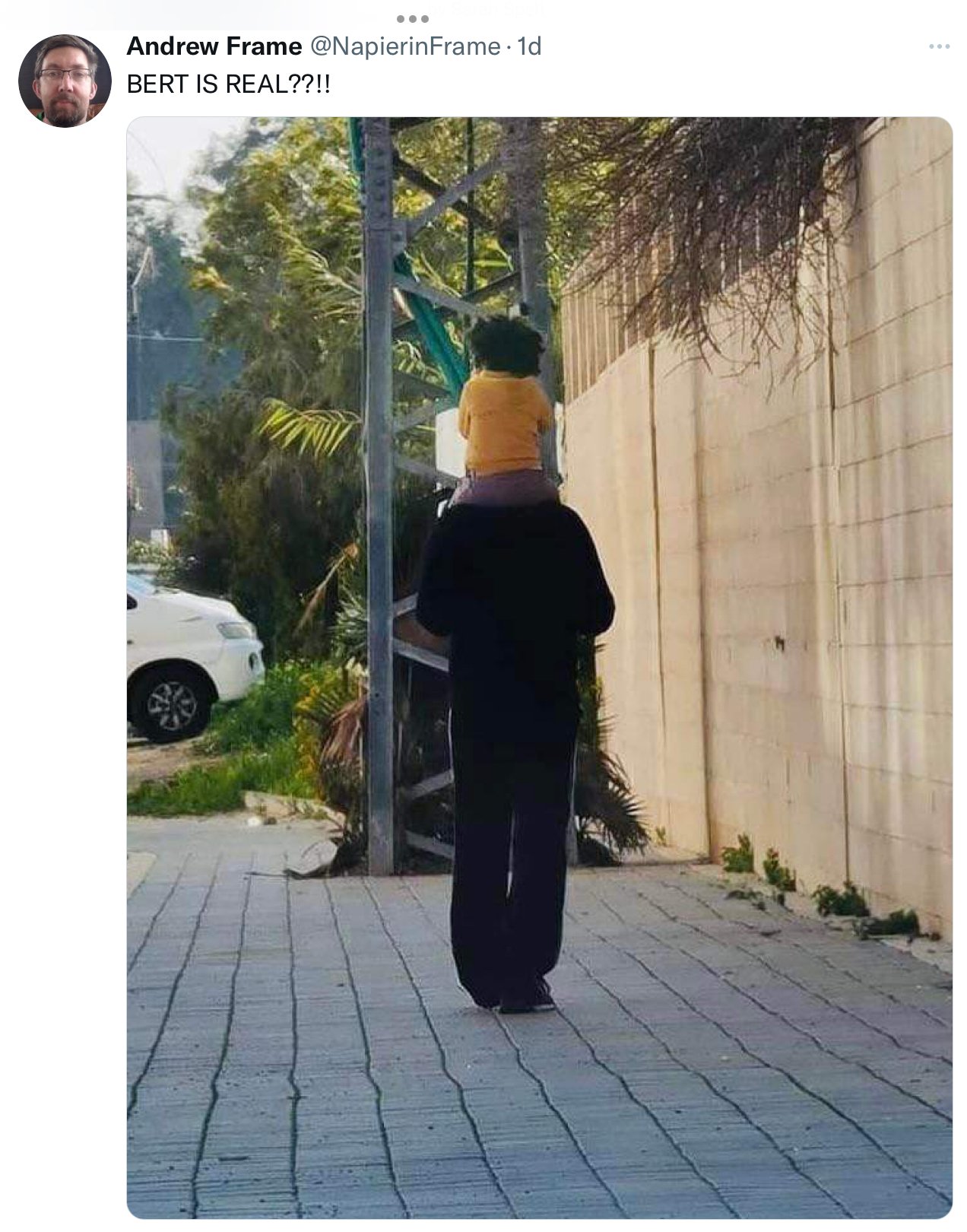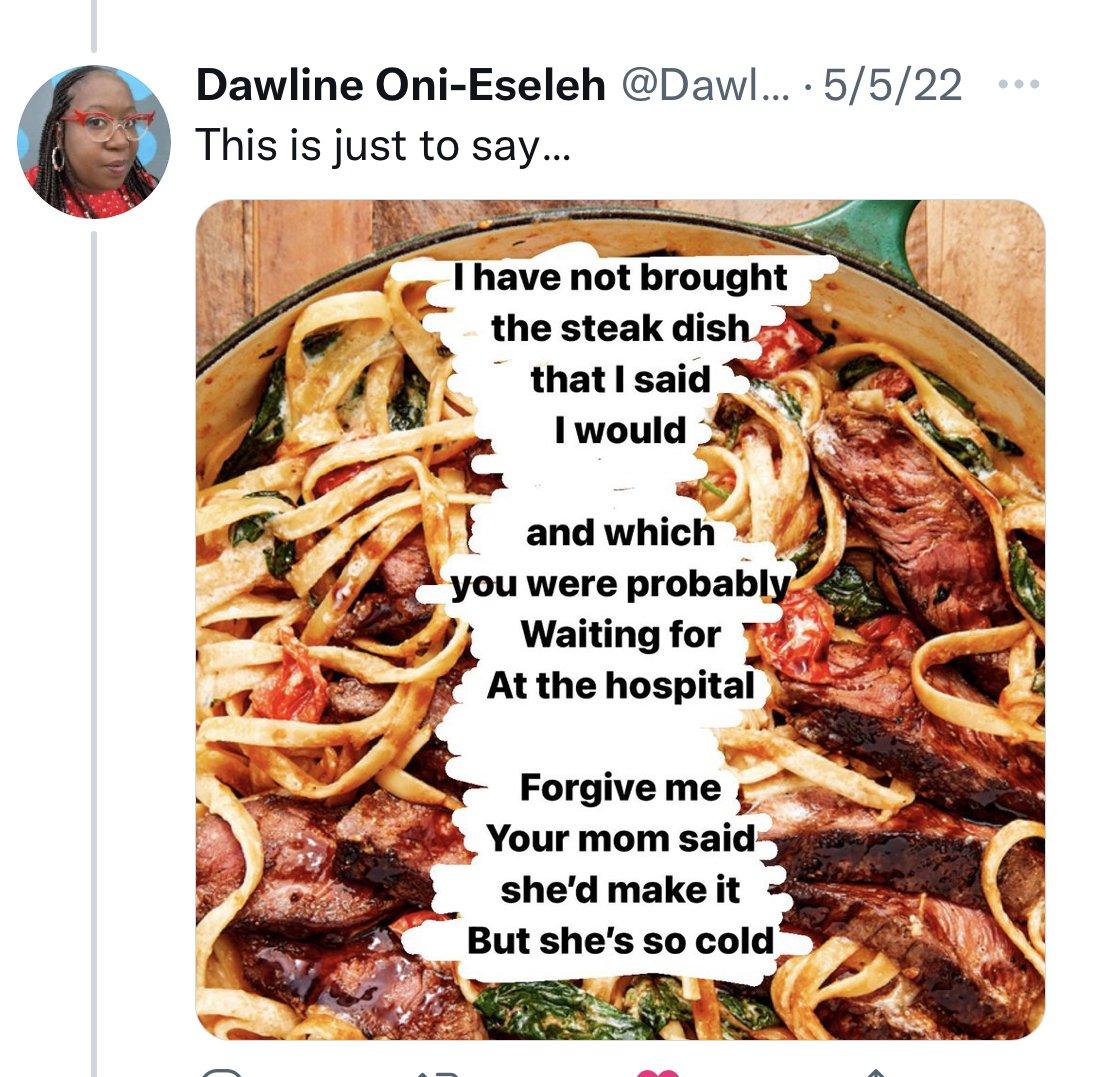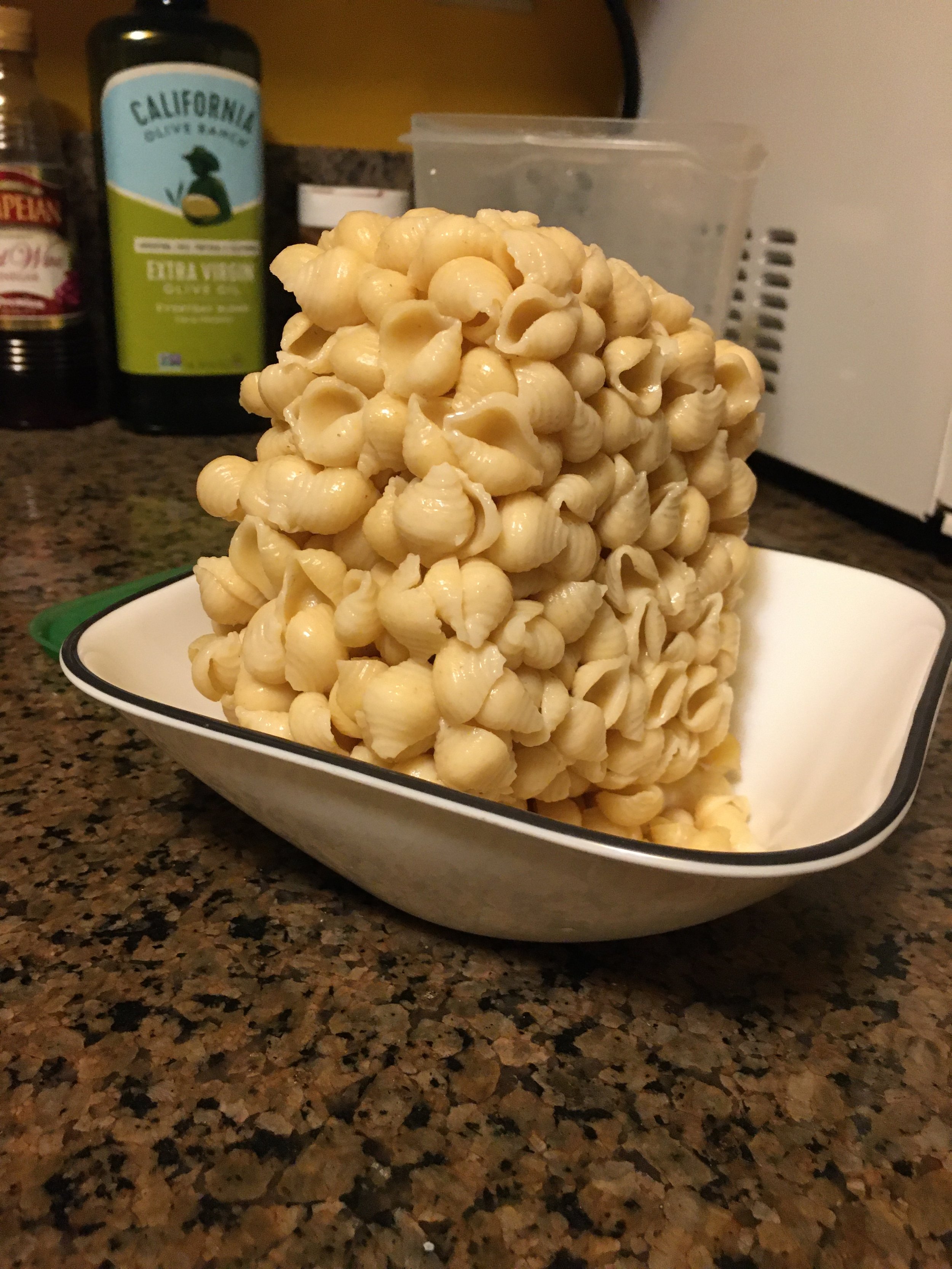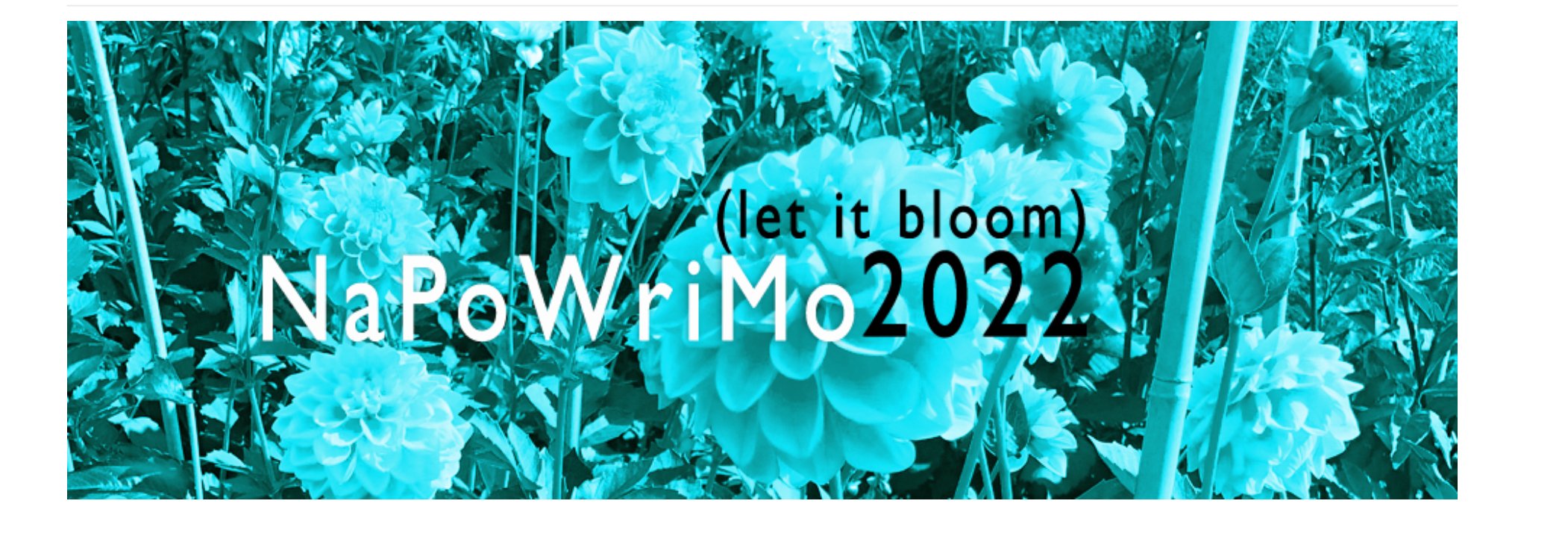So this month has not gone as planned. I have finished only two books so far, but the month isn’t over.
Beneath the Ice Fish Like Souls Look Alike by Emilia Phillips is a book I’ve had for a long time (in that stack of unread books), and the whole structure and intertwined connections are fascinating.
As you can see below, there is no title. Each page consists of a few lines, and the objects are treated as characters, holding agency and often reappear throughout. For example, a metal chair “shrinks further / into itself” and later “offers a seat to the shadow.”
For the first prompt, make a list of five objects and a second list of five actions/emotions. See what connections you can make between the lists. Or cut each list into single items and place items from each list into separate hats, drawing randomly.
Push yourself to create characters out of a single object or challenge yourself to use all five objects in one poem or a poem divided into sections. See what happens.
For the next prompt, use the first lines, “In the abandoned / house, the floorboards crowd / like teeth” as a ghostline. Remember to erase the line and credit the poet for your inspiration.
For the last prompt—again simply a writing exercise—take these lines and Mad Lib them, replacing the nouns and verbs with your own. Then if something sparks for you, take one of these recreated lines and use that for either your first line or your last.
Have fun reading and writing!

